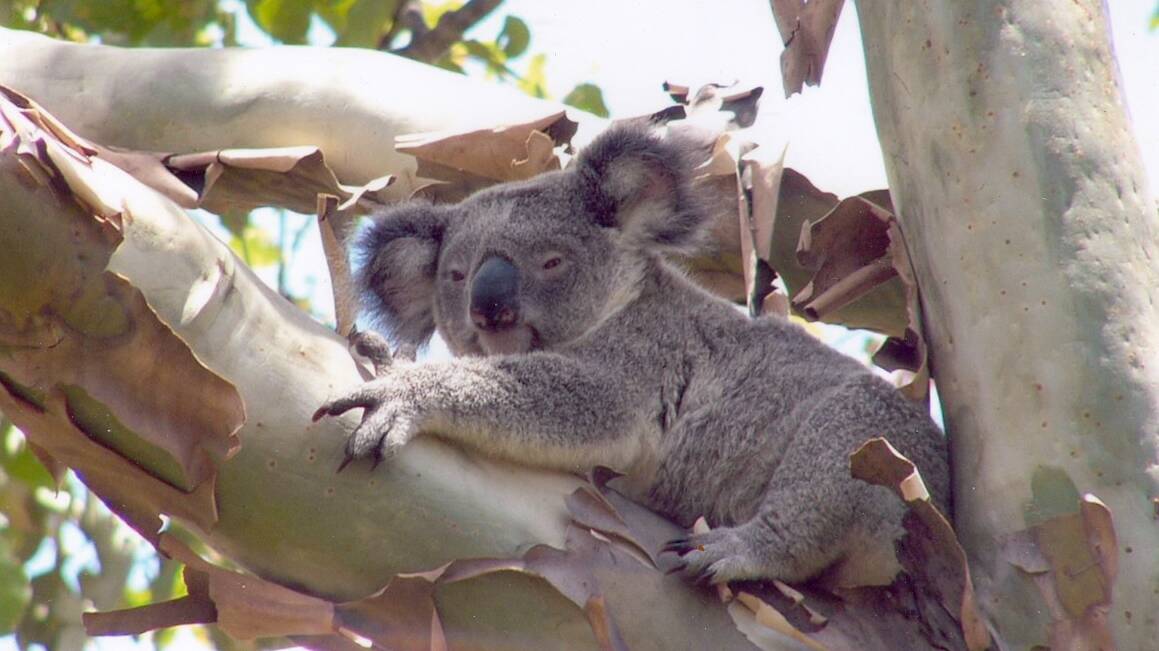
A KOALA safe neighbourhood will be created at Ormiston as a pilot to maintain population levels.
Create a free account to read this article
$0/
(min cost $0)
or signup to continue reading
The initiative, to get under way this year, is part of the Koala Conservation Action Plan 2016-2021.
A council report said initial research in 2017-18 had found there was an opportunity to maintain Redland’s koala population levels.
“Despite the pressures of urbanisation, the Redlands Coast has above average area of occupied koala habitat and has maintained at least three generations of koalas across the city,” the report said.
“Redland’s koala population appears to still be ecologically functional, even in the predominantly urbanised areas.”
The pilot koala safe neighbourhood is likely to encompass Ormiston’s Fellmonger and Hilliards Creek parks.
Koala conservation program officer Cathryn Dexter said there was good information about koalas at Ormiston.
She said other sites would be chosen once more research was finished.
Research found koalas were using 68 per cent of available Redlands habitat, considerably more than other local government areas that had been surveyed using the same method.
Griffith University researchers had found that residents’ knowledge about the causes of koala deaths and ways to protect them was modest at best.
“Attitudes towards koala conservation differ by age groups, with younger generations showing more negativity towards koalas,” the report said.
“Most of the respondents believe both the council and the community need to work together to protect koalas.”
Other research findings are due in October.
In the koala safe precinct, council will run campaigns for residents to be aware of threats to koalas like road strikes and dog attacks.
The report said the koala safe neighbourhood would become a hub for monitoring resident koalas to track mortality and disease.
Council’s Koala Conservation Action Plan addresses threats like habitat loss and fragmentation, road mortality, dog attacks, disease and climate change.
Research into koalas’ genetics had found sufficient gene flow between populations in urban parts of Birkdale, Cleveland, Ormiston and Wellington Point.
Genetics on koalas in southern parts of Redlands and bushland areas were yet to be finalised.
Cr Julie Talty said it was premature to vote on a funded plan before the research due in October.
Council also noted the state’s Koala Expert Panel Report and the government’s response.
The Queensland government’s response to the Queensland Koala Expert Panel’s Report:
Koala Action Group president Debbie Pointing said the organisation felt positive about the initiatives being undertaken through the plan but that protecting the remaining habitat must be a priority.
“KAG strongly believes that more effort must be made in the planning area to ensure the protection of existing habitat,” Ms Pointing said.
“KAG understands the new city plan does not afford protection to urban trees which is most disturbing and council must urgently look at strengthening of the local habitat protection laws and developing a Significant Tree Register to address this issue.”
Ms Pointing said more must be done to help urban koalas safely cross roads and access habitats and mates.
Neighbourhood and community awareness was vitally important so residents could play a role in koala conservation.
“...We are pleased about the interim genetic results showing that the urban population is still viable and worth saving,” Ms Pointing said.
“It’s also interesting that these koalas appear to be moving across the heavily urbanised landscape to seek each other out for mating and shows they are reasonably resilient and can find their way around the urban areas.
“It’s rewarding to know that the trees KAG has been planting for over 30 years have helped them.”

